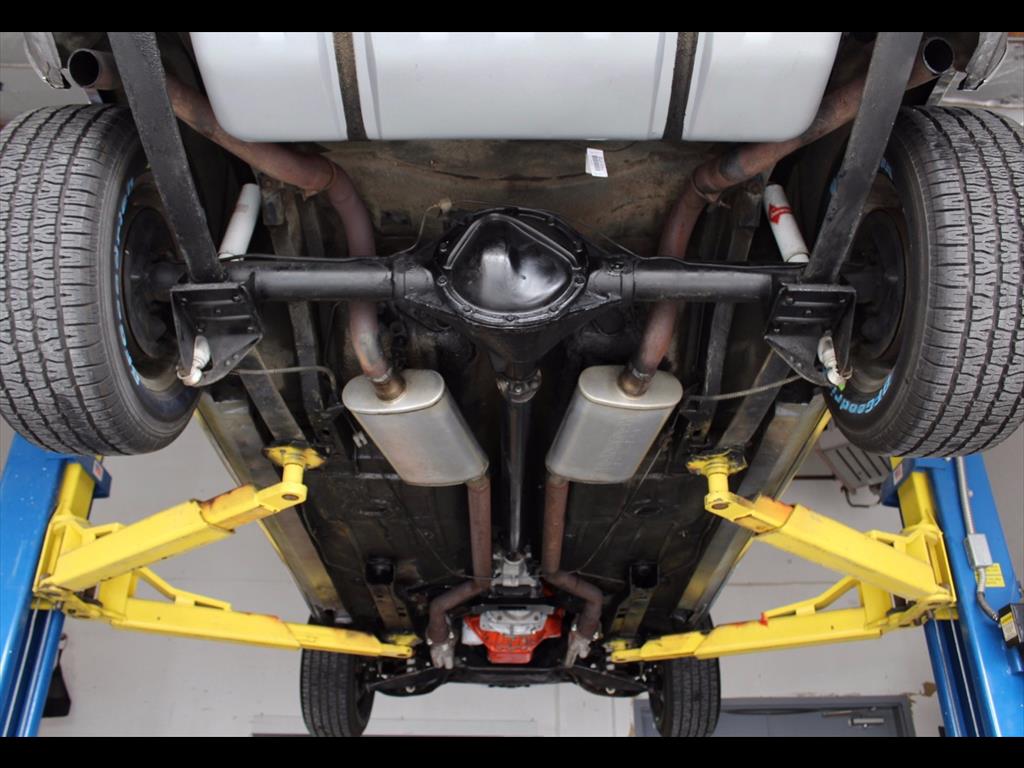
The 1968 El Camino Custom also featured bright window frames, bed moldings, and wide rocker panel accent moldings. It featured chrome framed side marker lamps, an El Camino rear fender script emblem, a bright tailgate latch, and rear side markers were optional.

The base model El Camino featured similar styling to the base model 1968 Chevelle. The 1968 El Camino trim was available in three model levels including the base model El Camino, the El Camino Custom, and the El Camino SS396. 1968 was the first year that the Super Sport model option was available on an El Camino. The overall dimensions of the bed were changed and would remain this way until 1972. More than 25,000 more El Caminos were built than Rancheros.1968 El Camino Specifications The 1968 Chevrolet El Camino was entirely restyled and featured more of a fastback design. But the El Camino had outsold the Ranchero every year since it was reintroduced in 1964, and this year was no difference. The El Caminos primary competition always had been and always would be the Ranchero, which was Ford’s version of the car/truck hybrid. Throughout the 1968 production year, 5,190 SS396 El Caminos were built. The following year it would begin to be only available as an add on to the Custom El Camino models with V8s. Though the SS package would be continued to be offered as an option bundle, it was only available as its own distinct model of the El Camino in 1968. The Custom models that included the V8 were the best-selling Camaros, and 26,690 of those were built. The custom added an upgraded interior trim to the car that included replacing the rubber floor with carpet. Like it had the previous year, the El Camino was available as a standard and a custom model. This marked the first time El Camino production topped 40,000, but it certainly wouldn’t be the last. For those that wanted V8 power but did not want to get up to the 396 engines, there was the 307 CID V8.Īpparently the restyle worked, because after a sales drop the previous year, total production was up to 41,791. The base engine was a 230 CID six-cylinder engine, and a 250 CID six also was available. Other engine options for the year also were carryovers from the previous year. The grille, which featured the SS emblem, was blacked out, and the tailgate featured a unique narrow black band. In addition to their SS396 emblems, they also included simulated hood scoops and louvered hood ports. The SS models also were visually distinctive from other El Caminos. But the modified 396 at the top of the line provided 375 horsepower, the most ever available in an El Camino. There were three 396 engines available for the SS model, and the first two (which were rated at 325 and 350 horsepower) were carryovers from the previous year. When looking at specifications, the car wasn’t that much more powerful than the top performance option offered in 1967, but giving the SS label as an option to El Camino showed that Chevy did view the truck/car as somewhat of a performance machine in addition to it being a practical hauling vehicle. The hood also was noticeably longer and the rear of the cab featured a recessed window.īut perhaps the most noticeable addition to the car was the new SS396 model. Among the changes was a longer, 116-inch wheelbase, which subsequently provided a longer El Camino that measured 208-inches. Almost all of the changes echo the changes made in the Chevy Chevelle sedan and wagon, which had provided the platform for the El Camino since 1964. With that said, the changes that distinguished the third-generation El Camino weren’t all that drastic upon first glance – which still, of course, presented a car/truck hybrid that many car buyers had found both attractive and practical. So the introduction of the 1968 car may have been somewhat of a shock to those not accustomed to Chevy changing the El Camino. Sales had been impressive for almost every model year, but did slip a bit in 1967.

Since the second-generation El Camino had been introduced in 1964 (following a three year break from the end of the first generation of the car), the car/truck hybrid had been changed very little, with any alterations made as part of a slow evolution process of improving the car.


 0 kommentar(er)
0 kommentar(er)
